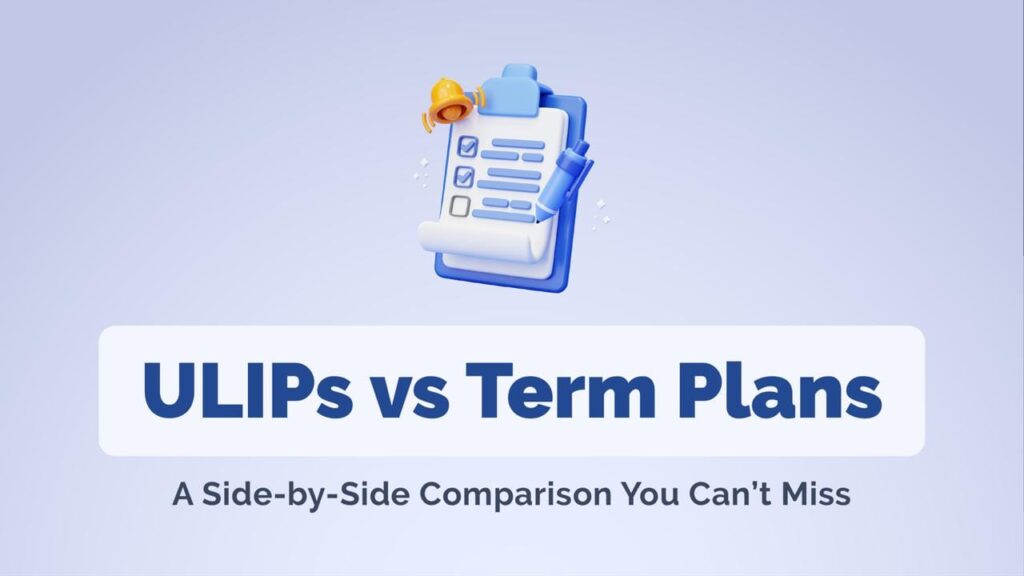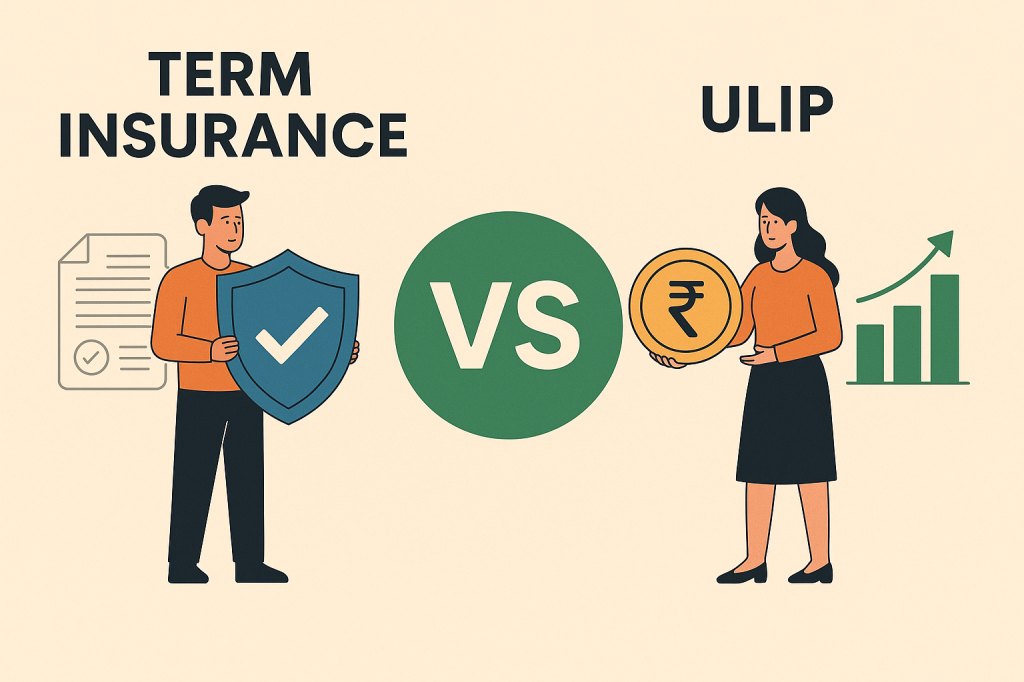When it comes to securing your family’s financial future, two popular options often come to mind — ULIPs (Unit Linked Insurance Plans) and Term Insurance Plans. Both offer unique benefits, but their objectives differ significantly. Understanding the difference between a ULIP vs Term Plan helps you make an informed decision that aligns with your financial goals.
In this article, we’ll compare ULIPs and Term Insurance in detail — from their coverage, returns, tax benefits, and flexibility to who should choose which plan.

What is a ULIP (Unit Linked Insurance Plan)?
A ULIP is a two-in-one product that combines investment and insurance. A portion of your premium goes towards providing life cover, while the rest is invested in market-linked instruments such as equity, debt, or balanced funds.
Key Features of ULIPs:
- Combines insurance and investment.
- Returns depend on market performance.
- Lock-in period of 5 years.
- Offers fund-switching options between equity and debt.
- Eligible for tax benefits under Section 80C and 10(10D).
ULIPs are ideal for individuals who are comfortable with market risk and want to grow their wealth along with having a life cover.
What is a Term Insurance Plan?
A Term Insurance Plan is a pure protection plan that provides a life cover for a specific term. If the policyholder passes away during the policy tenure, the nominee receives a death benefit. However, there’s no maturity benefit if the insured survives the policy term.
Key Features of Term Plans:
- Pure protection — no investment component.
- High coverage at a low premium.
- Flexible policy terms (10 to 40 years).
- Riders available for critical illness, accidental death, etc.
- Tax benefits under Section 80C and 10(10D).
Term Insurance is best for individuals who want financial protection for their family at the lowest possible cost.

ULIP vs Term Plan: Key Differences
| Criteria | ULIP | Term Plan |
|---|---|---|
| Purpose | Investment + Insurance | Pure Life Insurance |
| Premium | Higher due to investment component | Lower and affordable |
| Returns | Market-linked (equity/debt) | No returns unless death occurs |
| Lock-in Period | Minimum 5 years | No lock-in |
| Risk | Depends on market volatility | No risk |
| Flexibility | Can switch funds | Limited flexibility |
| Tax Benefits | Section 80C & 10(10D) | Section 80C & 10(10D) |
| Best For | Investors seeking wealth + cover | Families seeking financial security |
Which One Should You Choose – ULIP or Term Plan?
The choice between ULIP and Term Insurance depends on your financial objectives and risk appetite.
- Choose ULIP if you want to build wealth while staying insured. It’s ideal for long-term investors with moderate-to-high risk tolerance.
- Choose Term Plan if your primary goal is family protection. It’s cost-effective and provides a high sum assured at a minimal premium.
For most people, it’s advisable to first buy a Term Plan to ensure protection and then invest separately through mutual funds or other instruments for wealth creation.
Tax Benefits – ULIP vs Term Plan
Both ULIPs and Term Plans offer tax benefits, but in different ways:
- Premiums paid qualify for deduction under Section 80C.
- Payouts are exempt under Section 10(10D) if conditions are met.
- However, post the 2021 Budget, ULIP maturity proceeds are taxable if annual premiums exceed ₹2.5 lakh.
So, for tax efficiency and simplicity, Term Insurance still holds an edge.

Common Myths About ULIPs and Term Plans
- Myth: ULIPs always give better returns.
Fact: ULIP returns depend on market performance and fund selection. - Myth: Term Insurance is a waste if you survive the term.
Fact: The purpose of Term Insurance is protection, not returns. - Myth: ULIPs have no charges.
Fact: ULIPs include fund management, policy admin, and mortality charges.
Conclusion
Both ULIP and Term Plans play important roles in financial planning. A ULIP suits individuals who are financially stable and want to invest long-term, while a Term Plan is essential for everyone who has dependents and wants to ensure their family’s future.
If you’re just starting out, begin with a Term Plan and later consider ULIPs as part of your investment portfolio.

Leave a Reply